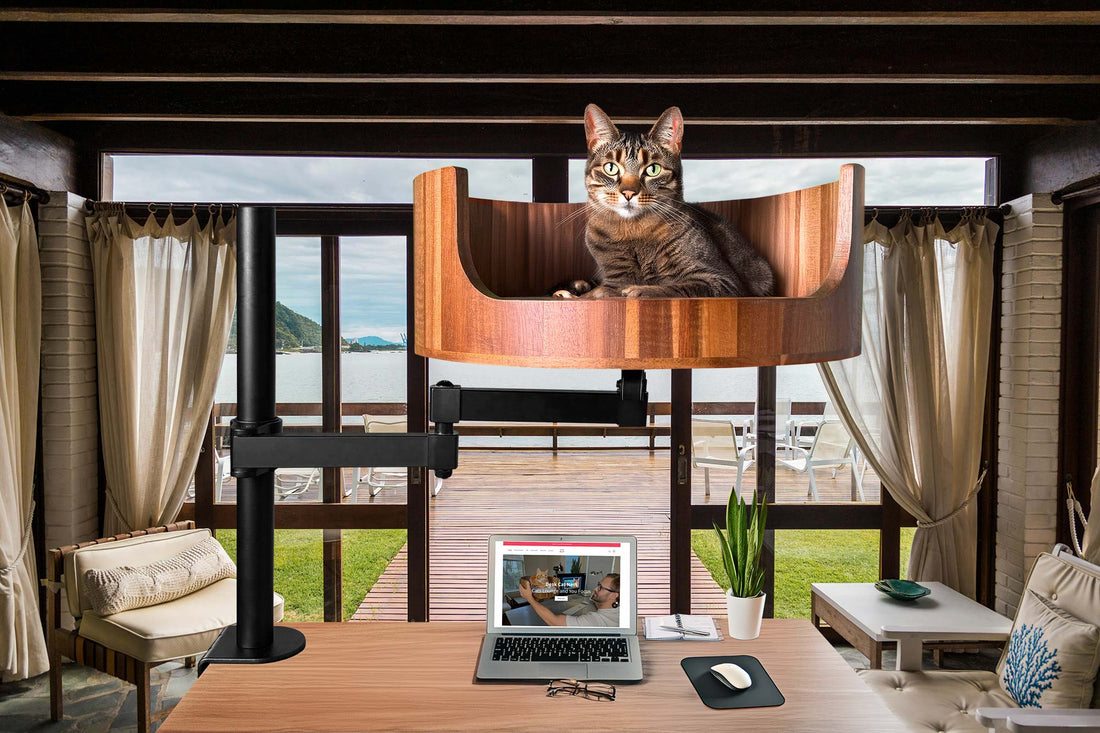
Why Does My Cat Do That? Understanding Feline Behavior
Share
Have you ever wondered why your cat acts the way it does? From kneading to meowing at odd hours of the night, feline behavior can sometimes seem mysterious and perplexing. In this article, we will explore some common cat behaviors and help you gain a deeper understanding of your furry friend's actions.
Desk Cat Nest is a behavior exhibited by many cats where they seek out cozy and confined spaces to curl up and relax. This can range from sitting in a cardboard box to snuggling into a pile of clean laundry. Understanding why cats exhibit this behavior can help you create a more comfortable and enriching environment for your pet. In addition to Desk Cat Nest, we will delve into other feline behaviors such as kneading, hunting instincts, and why cats exhibit certain vocalizations. By gaining insight into your cat's behavior, you can strengthen the bond between you and your four-legged companion.
1. Cats exhibit natural behaviors based on their instincts and needs, which can include nesting in unusual places like desks.
2. Understanding why cats choose certain spots to nest can help owners provide appropriate enrichment and comfort for their feline companions.
3. Factors such as warmth, security, or a desire for solitude can influence a cat's choice of nesting locations.
4. By observing their cat's behavior and responding accordingly, owners can strengthen their bond and ensure their pet's well-being.
5. Creating designated cat-friendly spaces with cozy bedding and toys can help redirect a cat's nesting behavior to more suitable areas.
Instinctual Behavior
Cats exhibit certain behaviors as a result of their instinctual nature. One common behavior is kneading, where a cat will rhythmically push their paws in and out against a soft surface. This behavior stems from kittenhood when they knead their mother's belly to stimulate milk flow. Another instinctual behavior is hunting, even if a cat is well-fed, they may still display stalking or pouncing behaviors as a way to satisfy their hunting instincts. Understanding these instinctual behaviors can help cat owners better understand and meet their cat's needs.
Communication Through Body Language
Cats communicate predominantly through body language. Ears positioned forward indicate a curious or friendly mood, while flattened ears signify fear or aggression. Tail position is another important form of feline communication; an upright tail indicates confidence, while a puffed-up tail signals fear or agitation. By observing a cat's body language, owners can better understand their cat's emotions and needs, ultimately strengthening the bond between human and feline companions.
Environmental Enrichment
Environmental enrichment plays a crucial role in understanding and addressing feline behavior. Cats are natural climbers and enjoy perching in high places to observe their surroundings. Providing vertical space in the form of cat trees or shelves can satisfy this need. Cats also require mental stimulation, such as interactive toys or puzzle feeders, to prevent boredom and destructive behaviors. By enriching their environment, cat owners can promote physical and mental well-being in their feline friends.
FAQ
Why does my cat knead on my lap?
It is a natural behavior in cats that begins when they are kittens, as a way to bond with their mother. Kneading helps them feel calm and happy, as it reminds them of being taken care of. When your cat kneads on your lap, it means they are feeling comfortable and safe with you.
Why does my cat scratch my furniture?
Scratching is a normal behavior for cats, as it helps them stretch their muscles, mark their territory, and keep their claws in good shape. Providing your cat with a scratching post or a Desk Cat Nest can help redirect their scratching behavior away from your furniture.
Why does my cat groom excessively?
Excessive grooming in cats can be a sign of stress, anxiety, or even an underlying medical issue. It is important to observe your cat's grooming habits and consult with a veterinarian if you notice any changes or concerns. Providing your cat with a cozy space, like a Desk Cat Nest, can help reduce their stress and anxiety levels.
Why does my cat sleep in strange places?
Cats have a natural instinct to seek out cozy and secure places to sleep. Sleeping in strange places could be your cat's way of finding a spot where they feel safe and comfortable. Providing them with a Desk Cat Nest can give them a dedicated space to relax and feel secure in your home.
In conclusion, providing your cat with a Desk Cat Bed can greatly help address the question "Why does my cat do that?" This innovative and comfortable bed offers a cozy and secure space for your feline companion to relax and feel safe. By giving your cat their own designated sleeping spot, you can help reduce their need to seek out alternative sleeping locations, such as your desk or workspace. The Desk Cat Bed not only promotes good behavior but also provides numerous health benefits, such as improved sleep quality and reduced stress levels. Investing in a Desk Cat Bed is a valuable choice that can positively impact both you and your cat's wellbeing.



















































